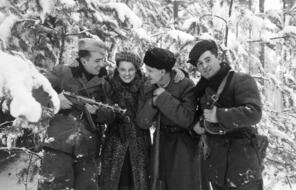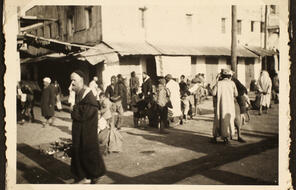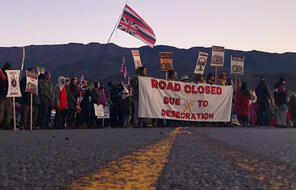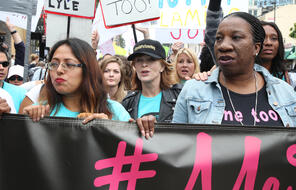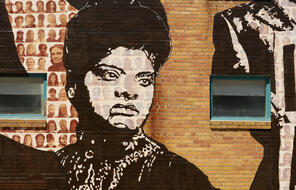What Did Jews in the Ghettos Know?
At a Glance
Language
English — USSubject
- History
- The Holocaust
- Resistance
The Nazis did not publish the minutes of the January 1942 conference at Wannsee (see reading, The Wannsee Conference). Nor did they announce the “Final Solution to the Jewish Question.” How, then, did Jews learn about the massacres in distant places and the gassings in the death camps? After all, almost all Jews in occupied Poland were in ghettos in 1942 with little or no access to newspapers or radio broadcasts. (See the map below showing the location of these ghettos throughout Europe.)
They did, however, hear stories and rumors, often based on reports from the few Jews who managed to escape from deportation trains, shooting sites, and killing centers. They sometimes sent couriers to other ghettos to find out if the rumors were true and to report on events in their own community.
Those couriers were more than messengers who carried a few letters from one city to another. They also smuggled documents, underground newspapers, and even weapons into the sealed ghettos of Poland. Many of them were women, mainly because most Jewish men were circumcised, unlike non-Jews, and so were easily identified as Jews. The women and teenaged girls who acted as couriers were known as kashariyot, from the Hebrew word kesher, meaning “connection.” 1
- 1Sheryl Ochayon, “Female Couriers During the Holocaust,” Yad Vashem, accessed May 17, 2016.
Jewish Ghettos in Eastern Europe
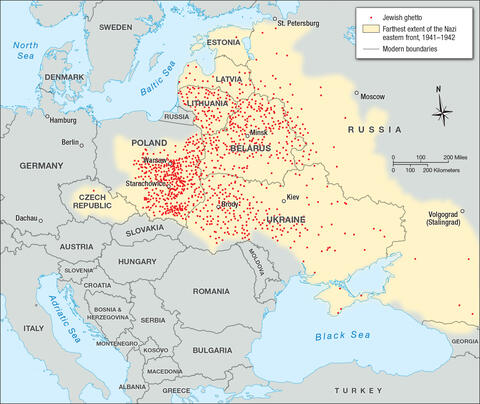
Jewish Ghettos in Eastern Europe
Historians estimate that about 1,100 Jewish ghettos were established by the Nazis and their allies in Europe between 1933 and 1945. This map shows the locations of the largest ghettos.
After Gusta Davidson Draenger, a courier in Kraków known by her Polish alias, Justyna, was captured, she wrote her story on pieces of paper smuggled into her prison cell. She described the harrowing trips she and the other couriers made:
For Gentiles, a train trip was an uncomfortable experience, but for a Jew every step outside the barbed wire [of the ghetto walls] was like passing through a hail of bullets. It was like standing at the front line of a battle. The only thing that could save you was chance, chance and inner strength. To develop that toughness, you have to put yourself through a psychological ordeal, from which you would emerge either pure and high-principled or base and depraved. 2
When they heard about mass shootings or death camps, Jews in ghettos struggled to figure out how to respond. Many Jews who heard these stories simply could not believe them or assumed that the escapees who told them had lost their minds. Most believed that Jews who had disappeared or been arrested had been sent to labor camps, not murdered.
In 2001, Holocaust scholar Michael Berenbaum interviewed two Jews who lived in the Warsaw ghetto in 1942—Marek Edelman and Simcha Rotem (or Kazik, as he was then known). Berenbaum asked what Edelman, Kazik, and other Jews had known about the fate of Jews who were deported from the ghetto. Were they aware of Treblinka, a killing center only 80 miles from Warsaw that opened in 1942 Berenbaum recounts:
Edelman corrected me. The issue was not Treblinka. It was Chelmno, where gassing began . . . a full eight and one-half months before the deportations [from Warsaw]. Two men escaped from Chelmno, and they reported . . . mobile gas vans killing people with exhaust fumes. Warsaw Judenrat [Jewish Council] leader Adam Czerniakow knew what was happening. But he suspected, or so Edelman was told, that . . . “it was impossible that such a thing could happen in Warsaw” . . .
The “street,” to use Edelman’s terms for the ghetto, was not convinced about gassings at Chelmno. . . . “There is a war,” they were saying. “Germans need a big labor force. Jews are a free labor force. There is no reason to kill them.” In short, logic dictated that Jews be kept alive. But the killing of the Jews was ideological, which overrode the logic of the war.
Nevertheless, I pressed on Treblinka.
Kazik’s recollection was specific. . . . When the deportations [from Warsaw] of July 22 [1942] began, [the Jewish resistance movement] was anxious . . . to learn about Treblinka, the destination of the transports leaving the ghetto. Zygmunt Frydrych, a member of the resistance who had connections with railway men . . . was able to board one of the trains and to head toward Treblinka. He could not enter the camp, but rather reached the Malinka stop, where he proceeded to speak with the railway men. Trains were arriving daily, he was told. This bit of information he already knew. The trains were filled with Jews. That, too, he knew. They arrived in the station filled; they left empty. No food was brought into the camp, and no wells had been dug to provide water. This information was new. . . .
The trains were arriving full, leaving empty, with no provisions made for the passengers . . . who had arrived at their destination. They were being left without food and water. At best, they would be starving. . . . Starvation was passive violence, eliminating those who were unfit without being forced to take any direct action.
“The camp was silent,” Frydrych was also told. Tens of thousands arrive. They enter. There are no provisions for their survival, and they make no noise.
In retrospect, we clearly know how to piece together each bit of information, but Frydrych’s assignment was to learn what had happened to the Jews, to do so directly so that he could be clear . . . in his report to the ghetto about the fates of those who had been forcibly evacuated. Still, he had not seen with his own eyes what was happening. . . .
Early the next morning, as Kazik described it, Frydrych wandered around Malinka and saw a dazed man in his underwear, walking around, yet wearing no clothes.
Edelman added, “It turned out that [the man] was his friend . . . ; his name was Walach.” Walach told of his escape from Treblinka on one of the trains that had brought Jews to the camp. He described in detail the gassing and the killing, so Frydrych had finally gotten his eyewitness report. Still he wanted more.
How was he to know what had happened, to know directly, to convince those who were skeptical back in Warsaw or those so desperate that they would still then deny what was happening?
“Take a deep breath,” Frydrych was told. The smell of burning flesh was unmistakable, undeniable. Frydrych had his confirmation. With this, he could return home to bear witness, to assume the task of convincing colleagues that resettlement was death and Treblinka was an extermination center. 3
Connection Questions
- How did Jews in ghettos learn about events in the world outside? What risks did couriers and others take to bring them news?
- Why was Zygmunt Frydrych so determined to “see with his own eyes” what was happening at Treblinka?
- What dilemmas did Jews in ghettos face when they learned about mass killings and death camps? Were any meaningful choices available to them?
- 2Gusta Davidson Draenger, Justyna’s Narrative, ed. Eli Pfefferkorn and David H. Hirsch, trans. Roslyn Hirsch and David H. Hirsch (Amherst: University of Massachusetts Press, 1996), 54.
- 3Michael Berenbaum, “Some Clarifications on the Warsaw Ghetto Uprising,” in Life in the Ghettos During the Holocaust, ed. Eric J. Sterling (Syracuse University Press, 2005), 18–20. Reproduced by permission from Syracuse University Press.
How to Cite This Reading
Facing History & Ourselves, "What Did Jews in the Ghettos Know?," last updated August 2, 2016.
This reading contains text not authored by Facing History & Ourselves. See footnotes for source information.




